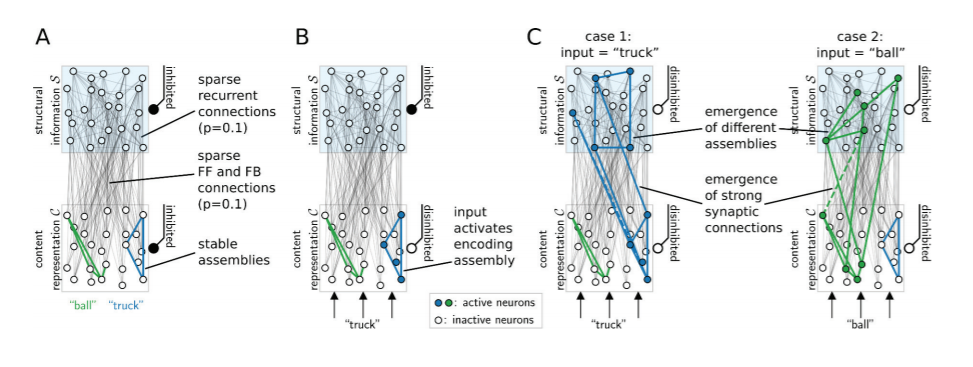A model for structured information representation in neural networks of the brain
15 May 2020

Humans can reason at an abstract level and structure information into abstract categories, but the underlying neural processes have remained unknown. Recent experimental data provide the hint that this is likely to involve specific subareas of the brain from which structural information can be decoded. Based on this data, we introduce the concept of assembly projections, a general principle for attaching structural information to content in generic networks of spiking neurons. According to the assembly projections principle, structure-encoding assemblies emerge and are dynamically attached to content representations through Hebbian plasticity mechanisms. This model provides the basis for explaining a number of experimental data and provides a basis for modeling abstract computational operations of the brain.
Original publication:
A model for structured information representation in neural networks of the brain
Podcast:
HBP Scientist Prof. Dr. Wolfgang Maass, one of the authors of this paper, spoke to the Brain Inspired podcast earlier this year about Computing Brains and Spiking Nets. You can listen to the episode here.



